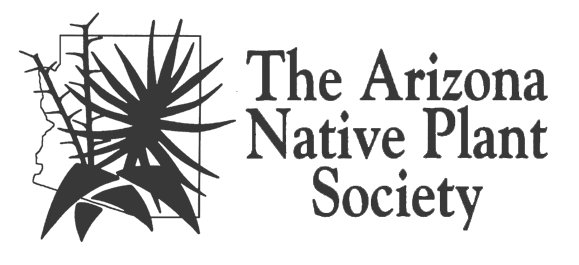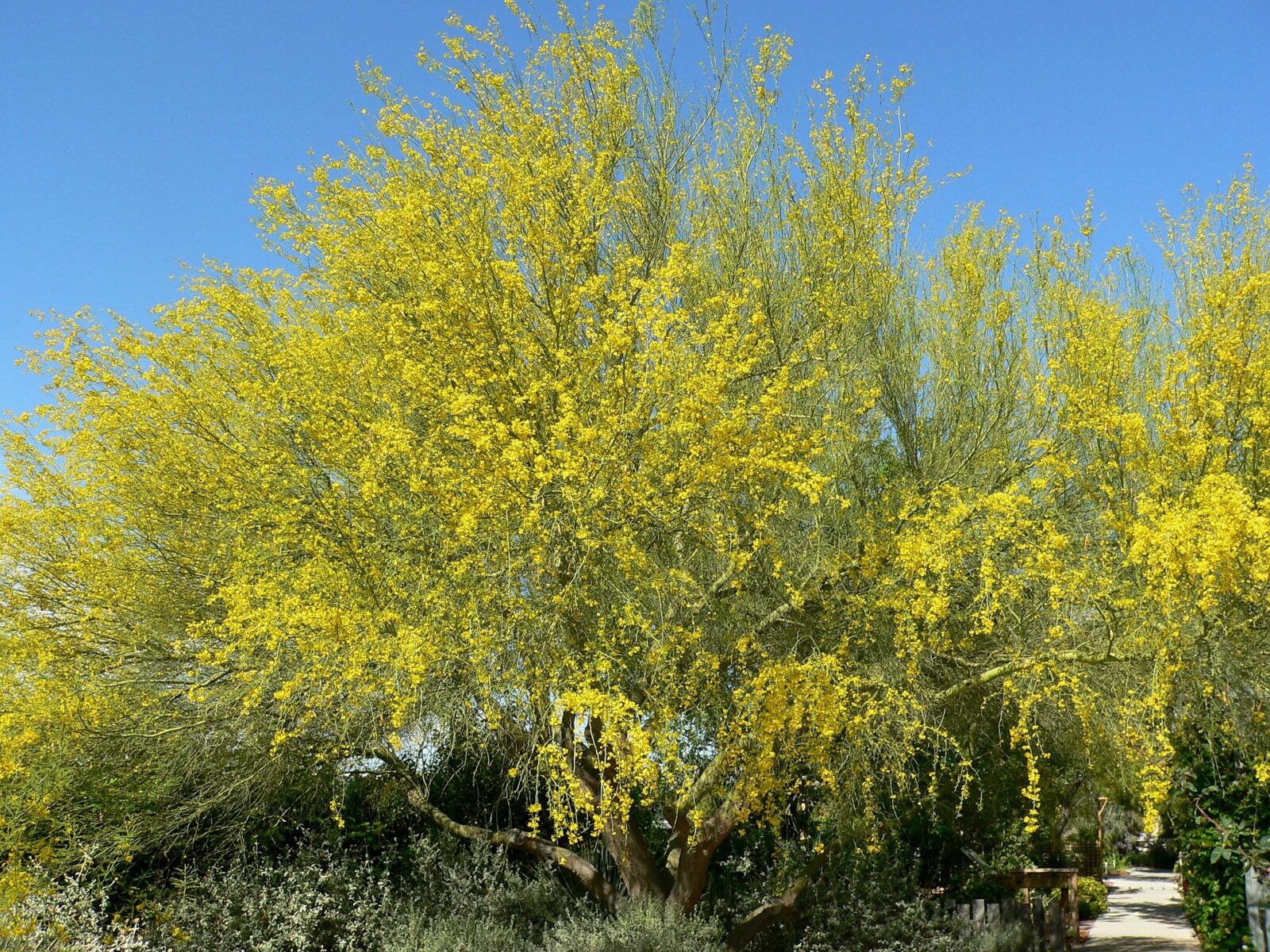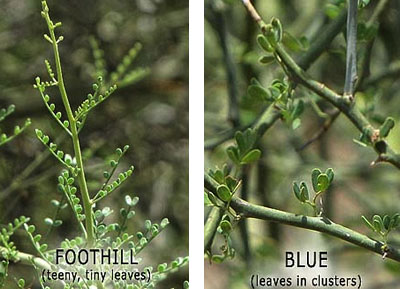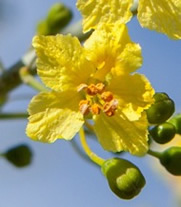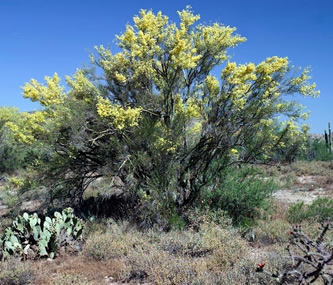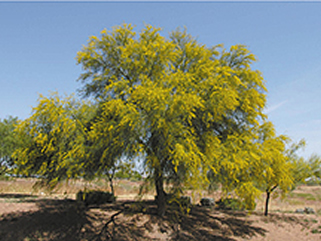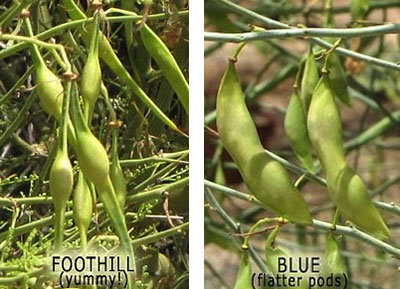Arizona State Tree
Foothill Palo Verde and Blue Palo Verde
In 1954, the State of Arizona named the Palo Verde as its State Tree. The legislature did not distinguish between the two species of this tree that are native to the State; therefore both the highly contrasting Foothill and the Blue share the honor. The dry desert adapted Foothill Palo Verde is very common (>95%) compared to the desert wash adapted Blue Palo Verde.
Both the Blue and Foothill Palo Verdes have a number of characteristics in common, starting with the reason they are called Palo Verdes (Spanish for green stick). The name indicates that these trees can use the chlorophyll in their bark to photosynthesize and produce sugar. In general, three quarters of their food is metabolized through the bark, whereas only a quarter is produced by the leaves.
In terms of growth form, they both start with short crooked trunks or multiple thinner trunks that branch close to the ground. The Foothill’s multiple main branches tend to be stiff and upright and its crown is open and irregular, maturing usually at less than 30’. The Blue tends to have large drooping branches, and maturing to 40 feet tall with a round crown.
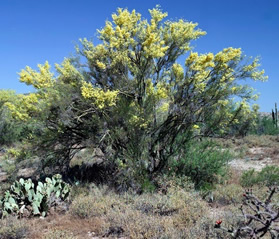
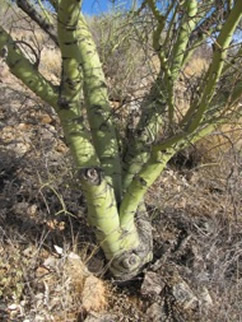
Foothill Palo Verde
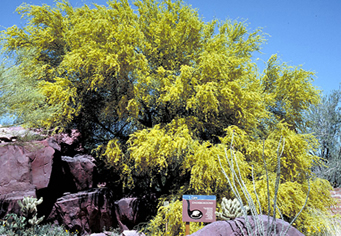
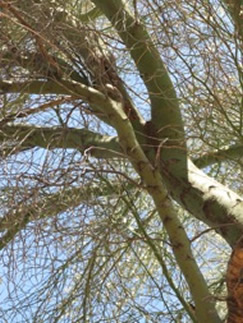
Blue Palo Verde
Seed Pods and Seeds
Blue Palo Verdes are much harder and require scarification for germination; the Foothill tree produces more abundant and tender seed crops that do not require scarification. Germination being easier, Foothill Palo Verdes survival on bajadas, plains, and rocky hillsides is more assured. Palo Verde seeds were a food source for the Hohokam people. They ground dry seeds in mortars to make flour. Today dry seeds can be sprouted and then roasted. When green, they can be blanched and eaten raw.
Palo Verde flowers, once pollinated, shed their petals and develop into clusters of bright green seed pods. Foothill Palo Verde seeds are oval shaped, dark brown, and very susceptible to bruchid weevils. Blue Palo Verde seeds are flat and tan.
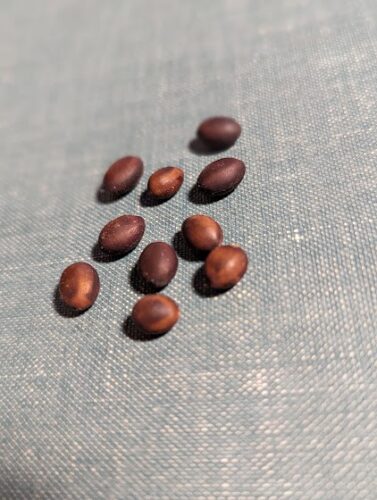
Foothill Palo Verde
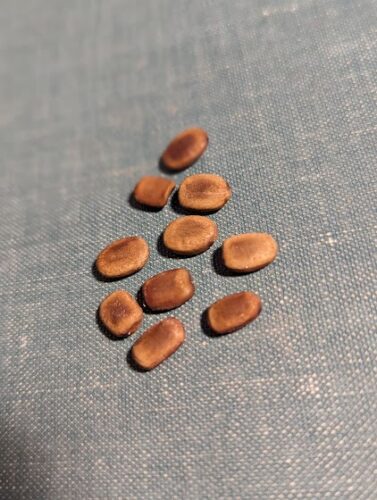
Blue Palo Verde
Conclusion
Palo Verdes serve as the nurse plants for the saguaro, giving shade and protection to seedlings in their slow growth to becoming giants. Plant diversity encourages diversity of animals attracted to the food, shelter, and nesting sites provided by Palo Verde trees.
The Foothill Palo Verde is a keystone species, especially in the Arizona Uplands subdivision, (known as a Palo Verde/Saguaro forest) of the Sonoran desert. As a hub of life, these trees create microhabitats that are critical to the structure and function of the Sonoran desert scrub biotic community.
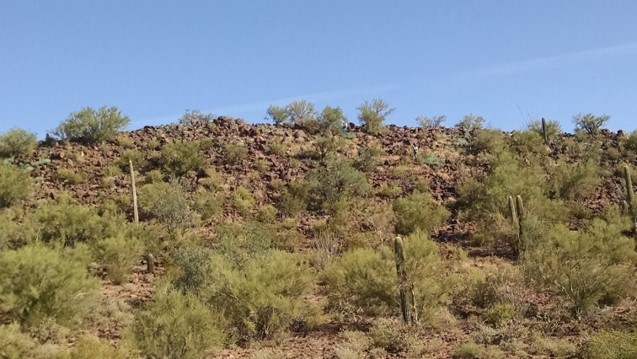
Photos courtesy of Katherine Darrow, Carole DeAngeli, Buzz Hoffmann, Marianne Skov Jensen, Hank Jorgensen and Michael McNulty and the ASDM Digital Library, and John Scheuring. Text by Gay Gilbert.




